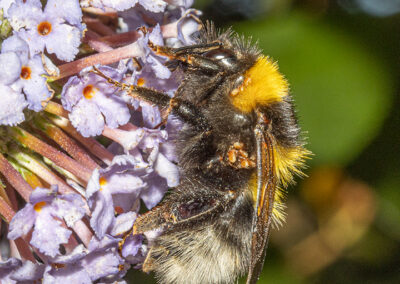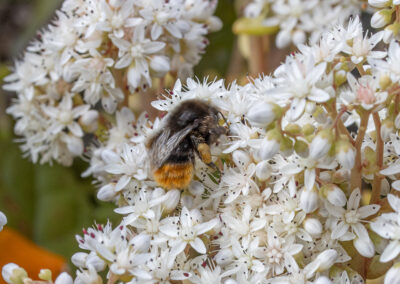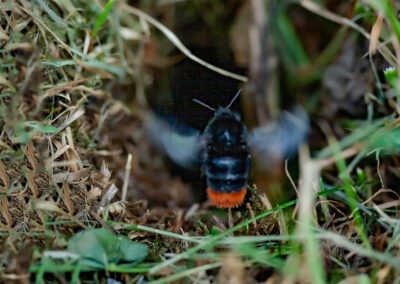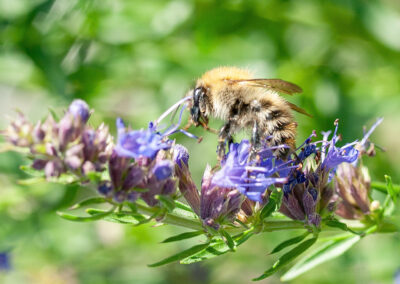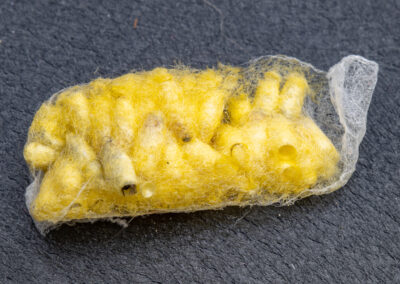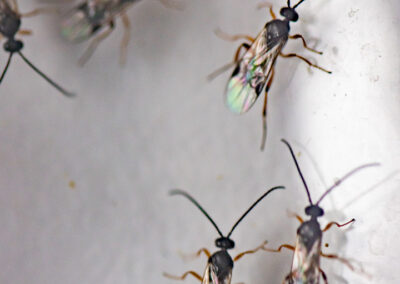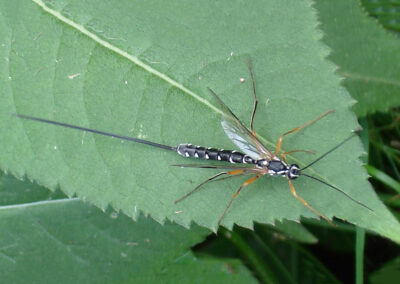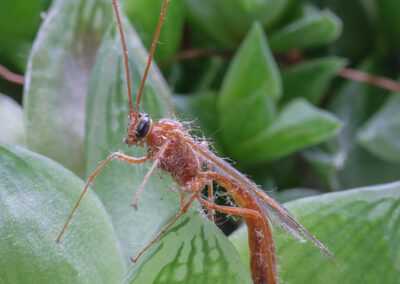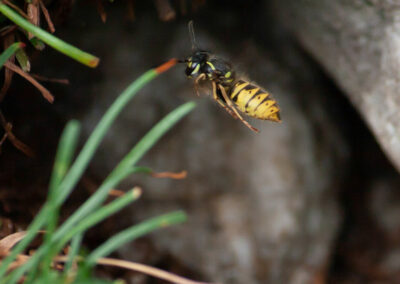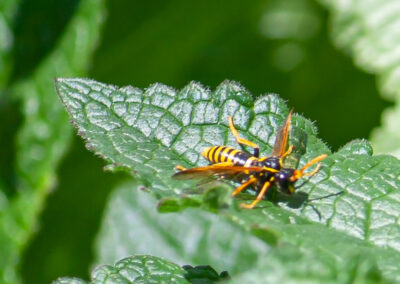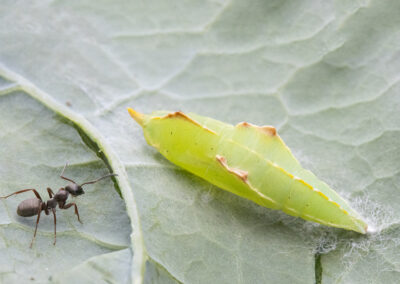Bees, Wasps, Sawflies and Ants
Bees, Wasps, Sawflies and Ants all belong to the order Hymenoptera, of which over 154,000 species are recognised worldwide, and with some estimates suggesting there may actually be over 1 million species.
The name Hymenoptera means ‘membrane wings’; most Hymenoptera have two pairs of wings, though as the wings on each side of the body are coupled together with tiny hooks (hamuli), they appear to have only one pair.
Most females have an ovipositor to lay their eggs into host species or otherwise inaccessible places. In many species these have developed into a sting, most notably in bees and wasps.
Hymenoptera go through a complete metamorphosis i.e they have four stages to their life cycle – egg, larva, pupa and adult.
They are the only British insects that that build nests (apart from cuckoo bee species, which like their avian namesake, use the nests of other species) and provide food for their young.
Bees
In Britain we have around 270 species of bee. These include 24 species of Bumblebee, 1 species of Honeybee, and just under 250 solitary bees, the latter including 65 species of Mining Bee (genus Andrena), 5 species of Flower Bee (genus Anthophora) and about 40 species of Sweat Bees (genera Lasioglossum and Halictus).
Most species of bee collect pollen, which is used as a protein-rich food for their larvae, and also nectar, which is a carbohydrate-rich food. In doing this, they are important pollinators of plants.
As well as the usual threats to pollinators, UK wild bees are also threatened by the increasing popularity of bee-keeping, creating too much competition for the limited availability in many areas of nectar and pollen; the large number of bees in a domesticated hive, working co-operatively, can take almost all the food resources in an area, leaving too little for solitary and bumble bees to survive on.
Wasps
There are over 7000 species of wasp in the UK, some social species, others solitary.
Many people ask what use wasps are, thinking of them as only nuisances that might sting them. They are important for ‘pest control’, estimated to feed 14 million kilogrammes of insects, mostly aphids and caterpillars, as well as spiders, to their young each year in the UK. Adult wasps do not eat insects, instead feeding on nectar from flowers, making them important pollinators.
Most species are parasitic, laying their eggs in living insects, the larvae then eating the insect alive until just before it pupates, when it often consumes th vital organs of the host, causing its death. The commonly-seen yellow and black striped wasp is a social species, feeding its young mostly on insects it has caught.
Cotesia glomerata, a parasitic wasp
Pupal cases of Cotesia glomerata, a wasp parasitic on moth larvae.
Sawflies
Sawflies belong to the Hymenoptera sub-order Symphyta, and there are about 550 species in the UK.
Unlike bees and wasps, they do not have a ‘waist’ between the abdomen and thorax, and all are harmless and cannot sting.
They are so named because most female sawflies possess saw-like genitalia, which they use to cut through plant tissue in order to lay their eggs – though a few species parasitise other insects.
The larval stage can last from a few months to several years, and is the stage at which most people see them – the larvae tend to eat in groups, and can strip a plant of its leaves in a few days, the Gooseberry Sawfly probably being the best known for this. Although the larvae look very similar to those of butterflies and moths, they can be distinguished by the number and locations of the prolegs.
The adults only live for 7 – 9 days.
Ants
Althought there are over 15,000 species of ant in the world, there are only 51 native species in the UK, with most species favouring the south due to the higher soil temperatures; there are also 13 introduced species which live in artificially-heated environments such as green houses.
All ants are social insects, living in colonies that comprise one or a few queens and up to many thousands of worker ants. There are a few parasitic species that have no workers and rely on the workers of the host nest that they inhabit.
Richard Becker, who lives near Llanidloes, as well as being a highly-skilled photographer, is also very knowledgable about ants, and has produced a useful guide to identifying them: https://richardbeckerphotography.co.uk/ant_identification/



